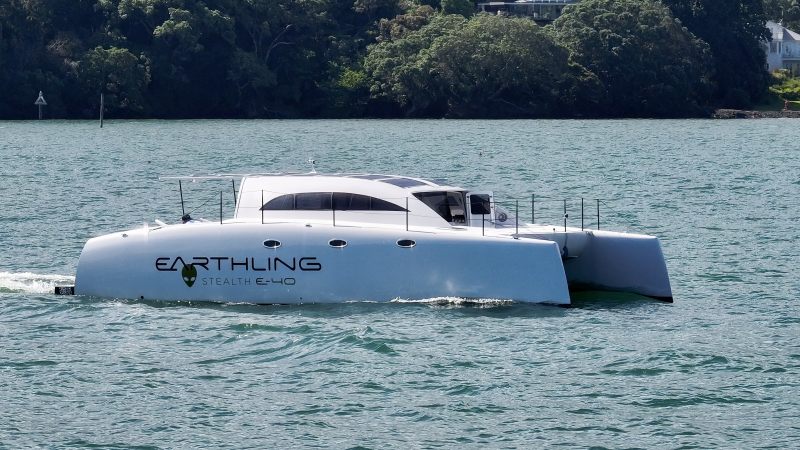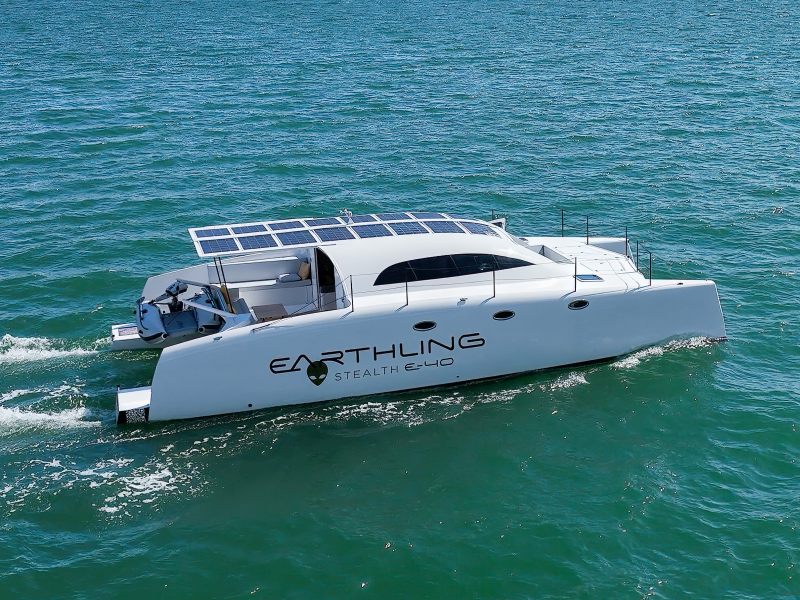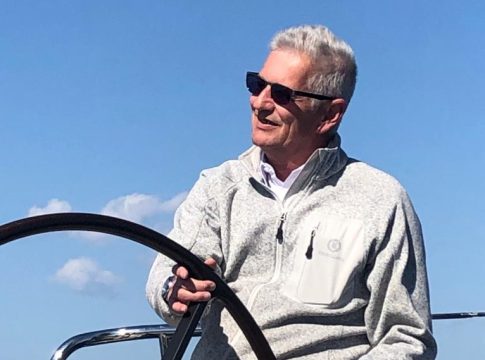Together with the company Earthling in New Zealand the first catamarans with MOLABO system are built. The E-40 Power Catamaran is built as a serial hybrid, soundlessly powered by two MOLABO electric drives.
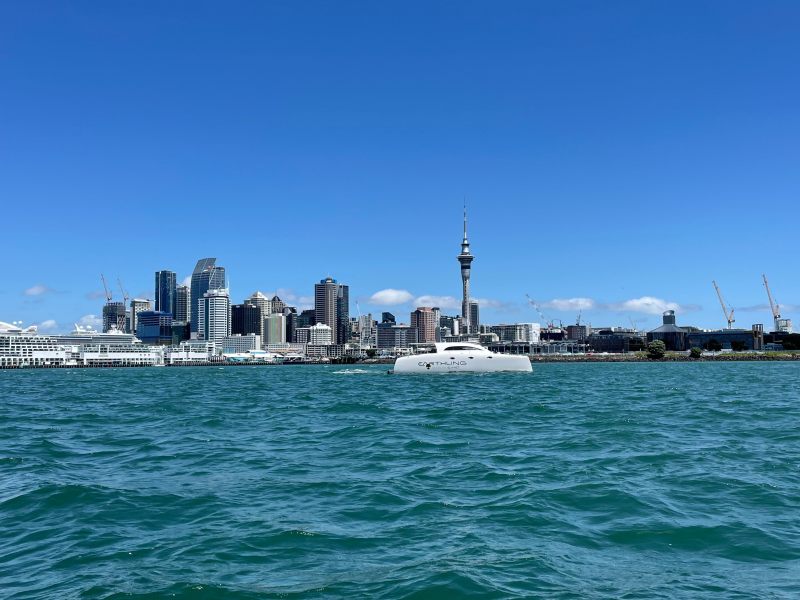
The vessel features two autonomous powertrains, one for each hull. A total of 4 lithium-ion battery modules (2 on each side) of 11 kWh each are used. The modules are located in the center of the vessel. The 44 kWh lithium battery can be charged by a coachroof-mounted solar array. The solar array is supplemented by two 8.5kW DC Charge Genverters. All of the system components are dual redundant and cross-connected, ensuring reliable performance. The technology used in the system is state-of-the-art and represents the latest in European innovation. “The experience of being onboard Earthling the extraordinary E-cat left me speechless initially”, wrote the journalist Alex Stone in his review. “The 50 kW drive from MOLABO is a really impressive product as you don’t need any high voltage safety measures for installation”, says John, the owner of Earthling. Commissioning of the MOLABO electric drive is completed via MolaLINK. This allows the engineers from New Zealand and Germany to communicate easily with each other and simplifies remote service for customers.
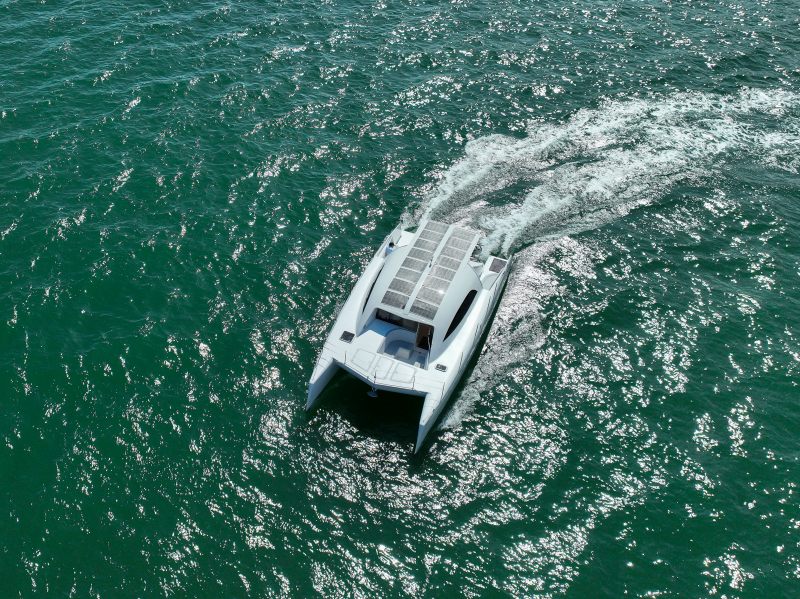
The E-40 Power Catamaran can travel up to 40 nautical miles with a full battery charge, powered by battery alone at slower speeds. At 8 knots, the range is around 30 nautical miles, while the sweet spot of 10 knots provides a range of 20 nautical miles. The vessel’s design concept, “Sailing without Sails,” enables effortless cruising at comfortable speeds, with the option for short, high-speed hops if necessary, as high speeds require more energy. To ensure reliable performance, the backup Genverters automatically start enroute to maintain a 20% capacity. This allows the electric catamaran to achieve long ranges even in difficult conditions and strong headwinds. When at anchor under sunny skies, the Earthling’s batteries can fully recharge from the solar panels in approximately three days. Alternatively, using shore power, the batteries can be recharged in as little as two hours. The hybrid system is a smart compromise for this vessel, balancing the benefits of solar power with the need for faster charging when required. “Moving at 10 knots feels effortless, like sitting on a couch at home” describes John. “The sleek hulls effortlessly slice through the water, with no rooster tails and no indication of the great weight we’re carrying. Best of all, there’s no burning of fossil fuels, no fumes, and no noise in electric mode. It’s a truly meditative experience.”
